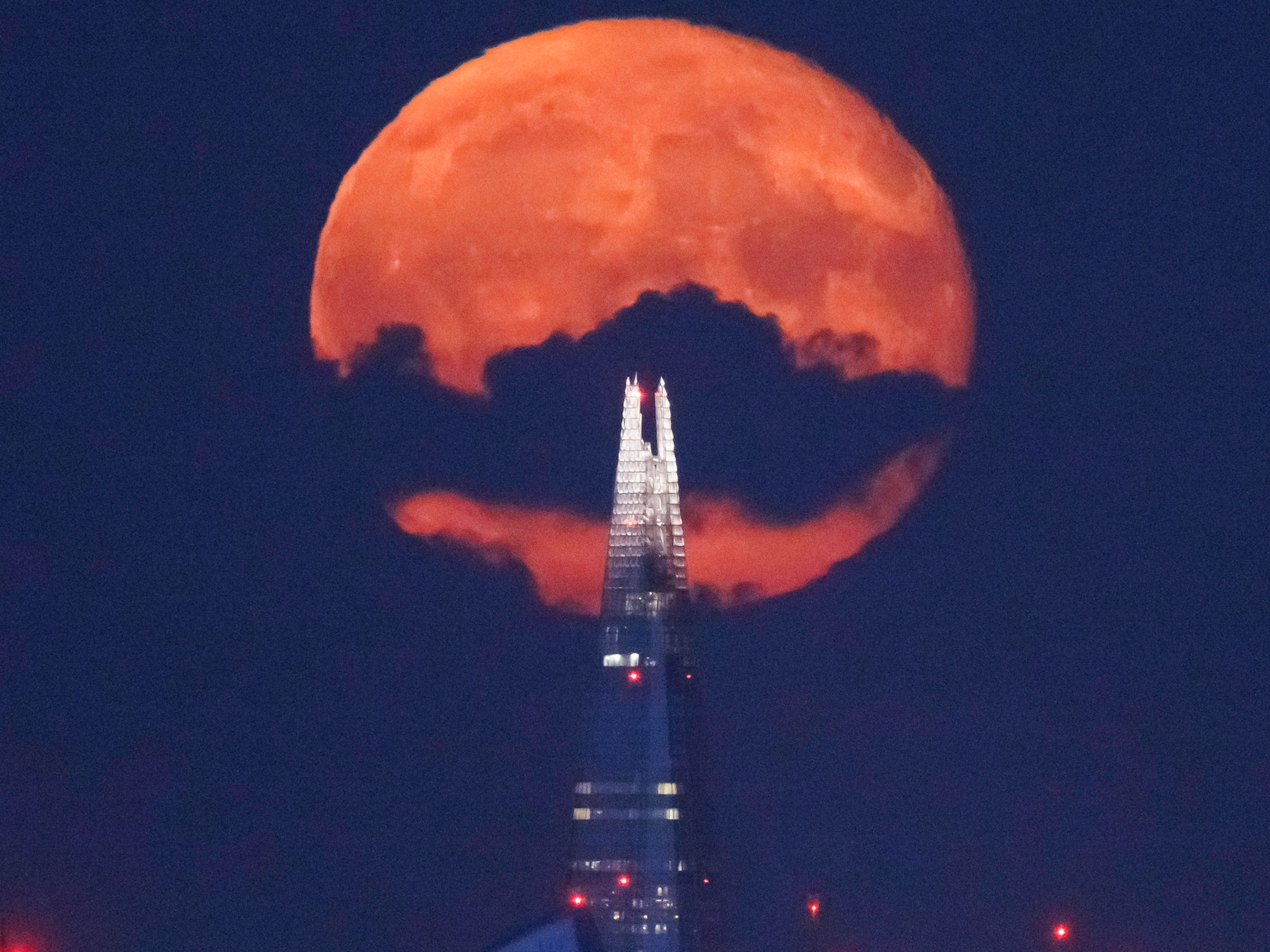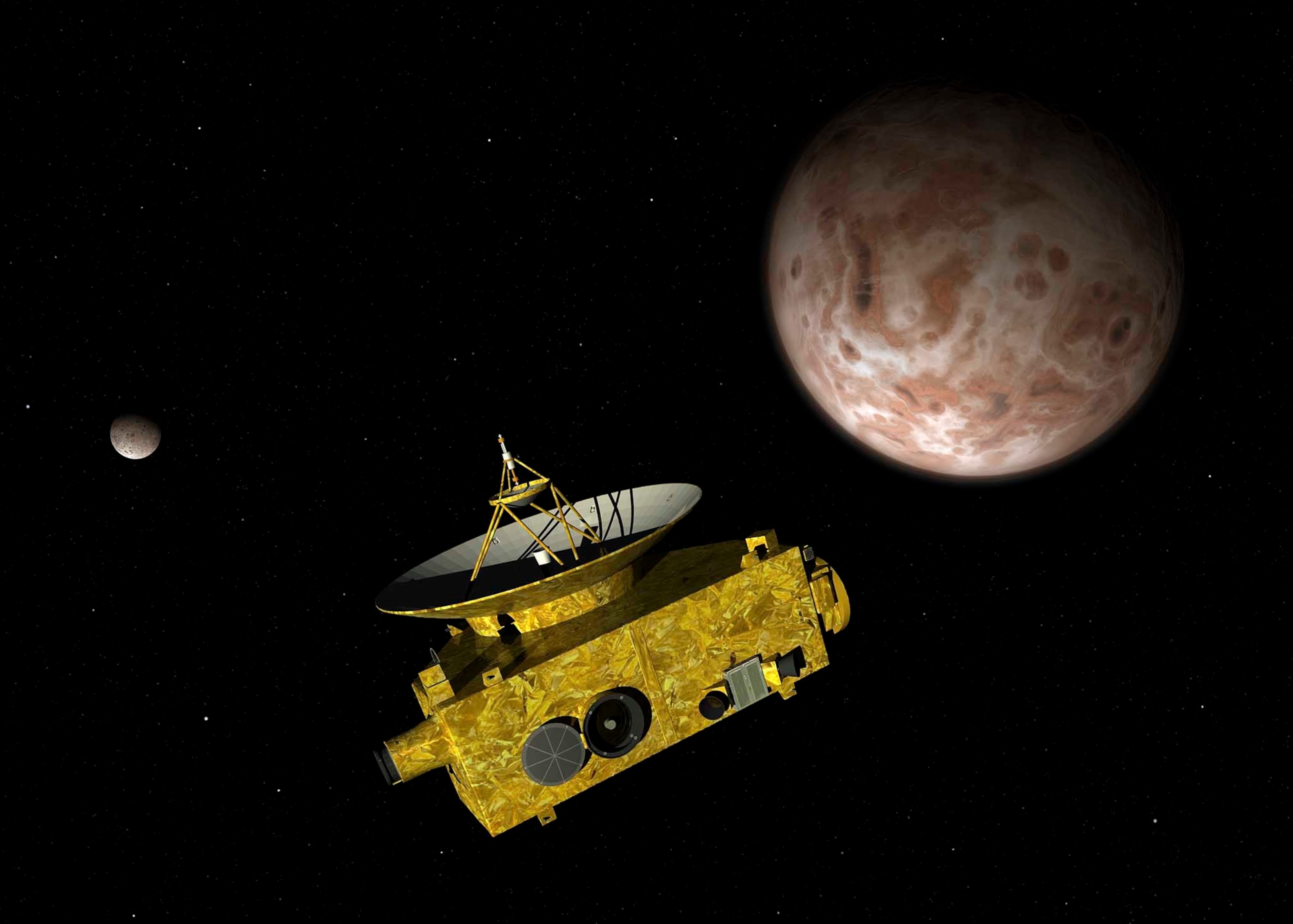
This Week's Night Sky: Pluto Presents an Observing Challenge
Days before the New Horizon spacecraft visits, the dwarf planet puts on a show for sky-watchers.
Skies appear busy this week with the moon pointing to Uranus and the Bull’s eye and Pluto hitting prime time in both sky and space exploration.
Pluto opposition. Pluto puts on its best show in Earth’s skies for all of 2015 on Monday, July 6.
Only eight days before the New Horizons spacecraft reaches the dwarf planet, the super-faint world reaches opposition—meaning it lies opposite the sun in our sky, rising in the east at sunset and setting in the west at sunrise. This allows Pluto be visible all night long.
Pluto is nestled with the southern constellation Sagittarius, which is now visible late nights in the southern horizon for those in the mid-northern latitudes. Check out the Sky and Telescope website for a detailed finder chart.
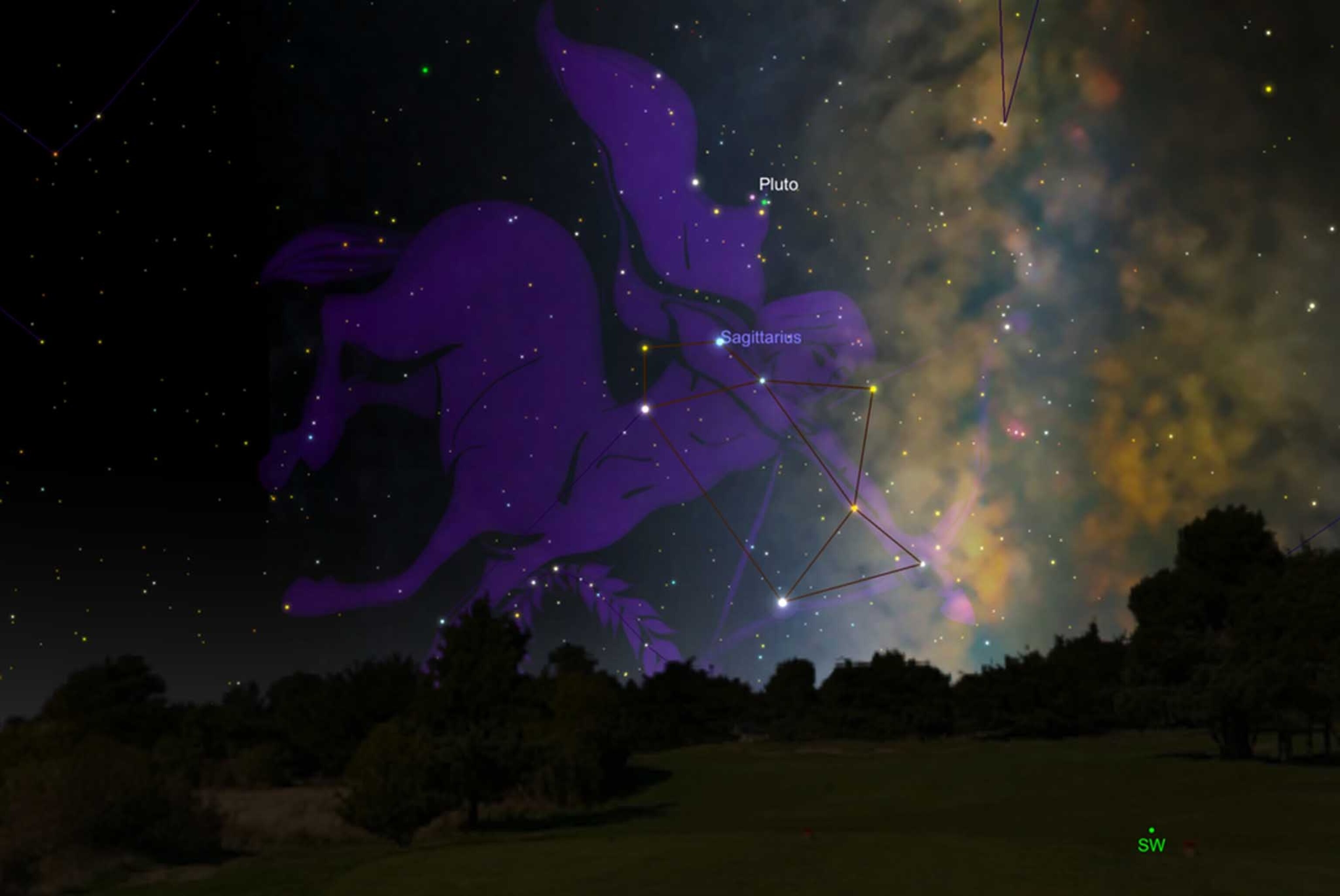
The distant world remains a difficult observing challenge, however. Lying 4.9 billion kilometers from Earth at the fringes of the solar system, Pluto shines at a meager 14.1 magnitude. That means backyard sky-watchers need, at a minimum, a telescope with an 8-inch diameter mirror to glimpse the faint world.
You shouldn’t expect to see Pluto as anything more than a faint star-like object through even the largest of telescopes; the wonderment lies in being able to spot it with your own eyes.
Fishy moon. Before dawn on Tuesday, July 7, look for the waning gibbous moon hanging just below the Circlet, the most easily recognizable part of the constellation Pisces, the fishes.
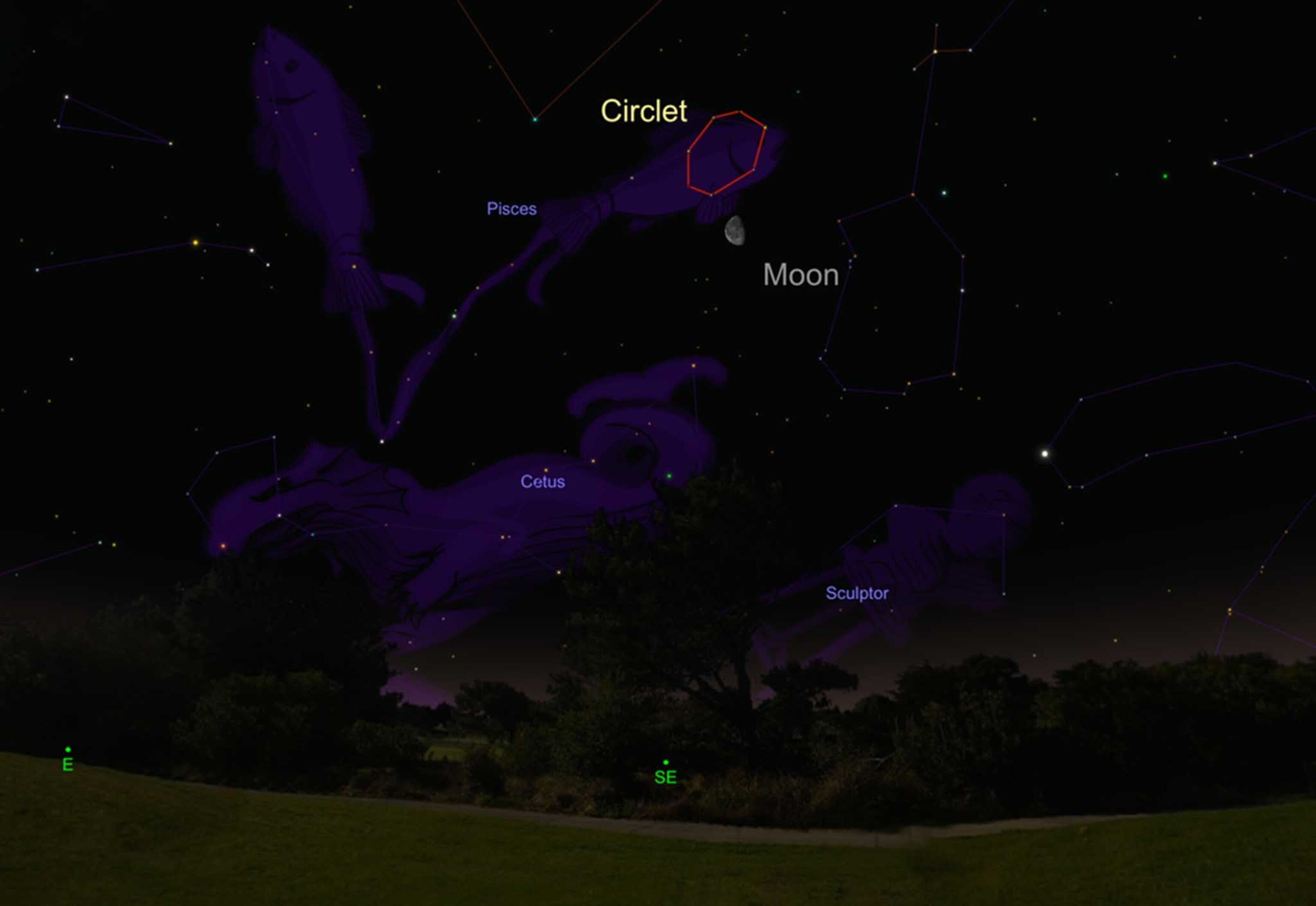
Marking the head of the fish that points westward, this circular pattern of seven faint stars is usually barely visible with the naked eye from light-polluted city suburbs. On this night, though, the glare of the nearby moon will make the Circlet invisible to the naked eye, no matter how clear the skies. Use the moon as a guidepost to track down this circle of stars with binoculars or a telescope, and look for it to span about 5 degrees across the sky.
Moon meets a green giant. In the pre-dawn hours of Thursday, July 9, look for the waning crescent moon to point the way to planet Uranus.
A pair of binoculars should make it easy to pick out the green ice giant as a faint 5.8-magnitude disk about 3 degrees away from the moon in the eastern sky, nestled within the constellation Pisces. The two objects will be separated by less than the span of your three middle fingers held at arm’s length.
The planet can be spotted with the naked eye under a moonless but very dark sky in locations away from any light pollution. However, binoculars just make the hunt much easier, and the planet can then be spotted even from light-polluted cities.
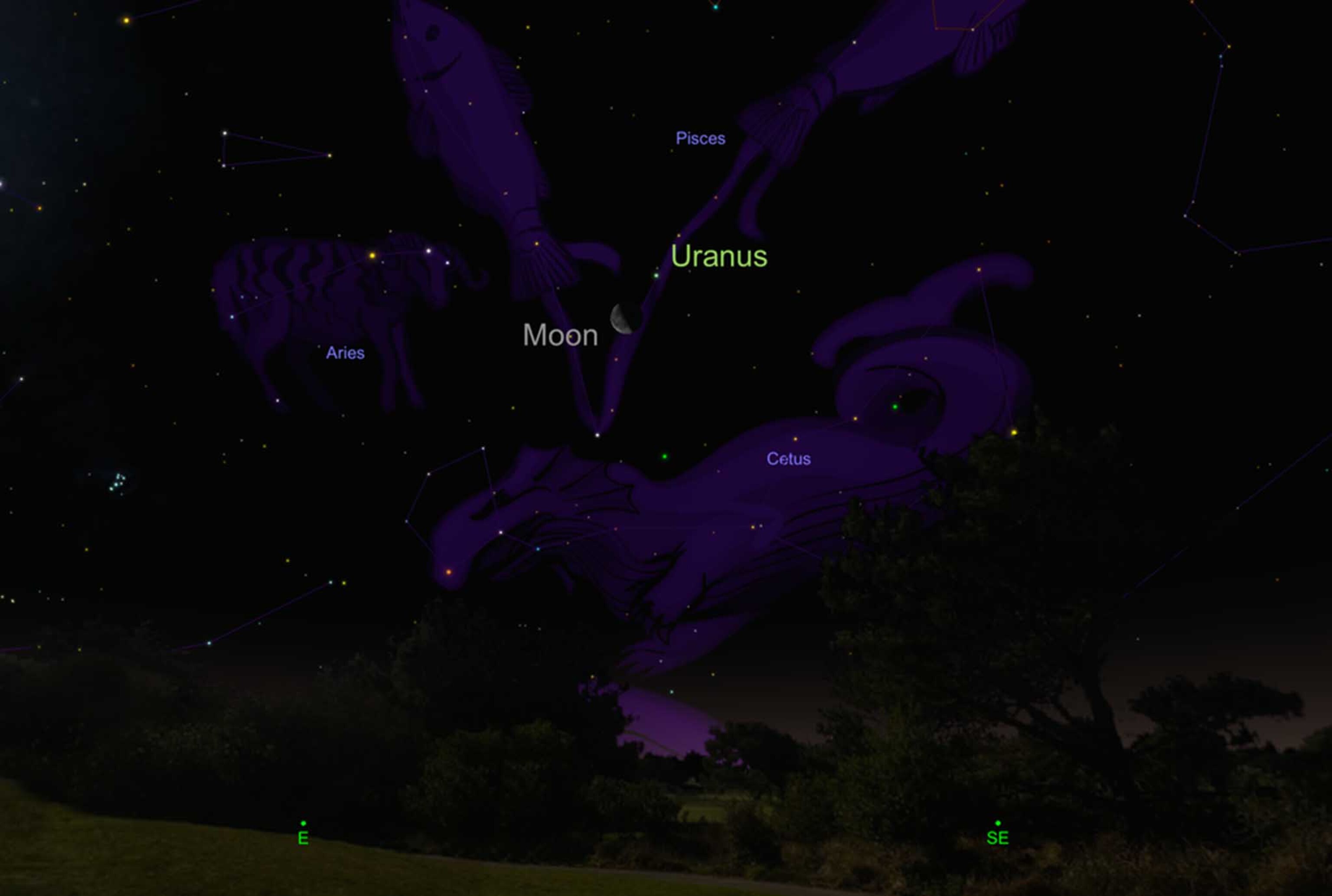
In the past, backyard telescopes trained on Uranus have revealed little atmospheric detail on Uranus. But this past year, astronomers using one of the largest observatories in the world discovered that the distant world may be getting increasingly stormy, producing bright blotch-like cloud features that might be visible through backyard scopes.
Venus at its brightest. Look west after sunset on Thursday, July 9, for beacon-like Venus, the brightest object in the night sky, after the moon.
The neighboring world will officially be shining at its brightest as it reaches its 2015 evening apparition and moves in its orbit closer to Earth. At this time, a little more than a quarter of its disk appears lit, and if you point a telescope at the planet, its disk appears very much like a mini-crescent moon. A very cool sight!
Bull and the moon. Early risers on Sunday, July 12, can check out the razor-thin crescent moon posing next to the Hyades star cluster and the bright orange star Aldebaran low in the eastern horizon. The cluster represents the face of the bull, and Aldebaran is his eye.
The distinctly V-shaped cluster of over nearly a dozen naked-eye stars is one of the closest grouping of stars to Earth, at 152 light-years distant.
Clear skies!
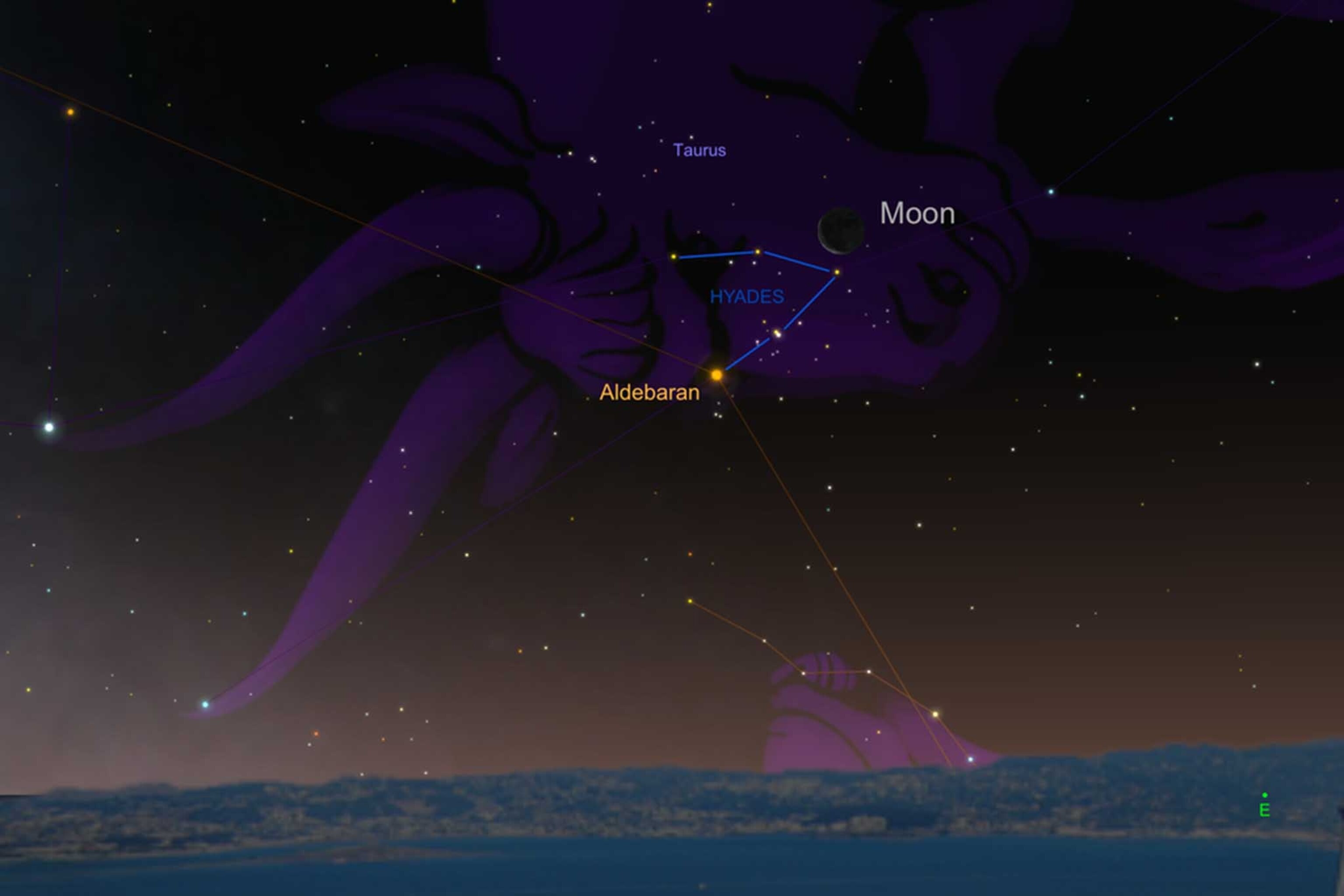
Follow Andrew Fazekas, the Night Sky Guy, on Twitter, Facebook, and his website.





